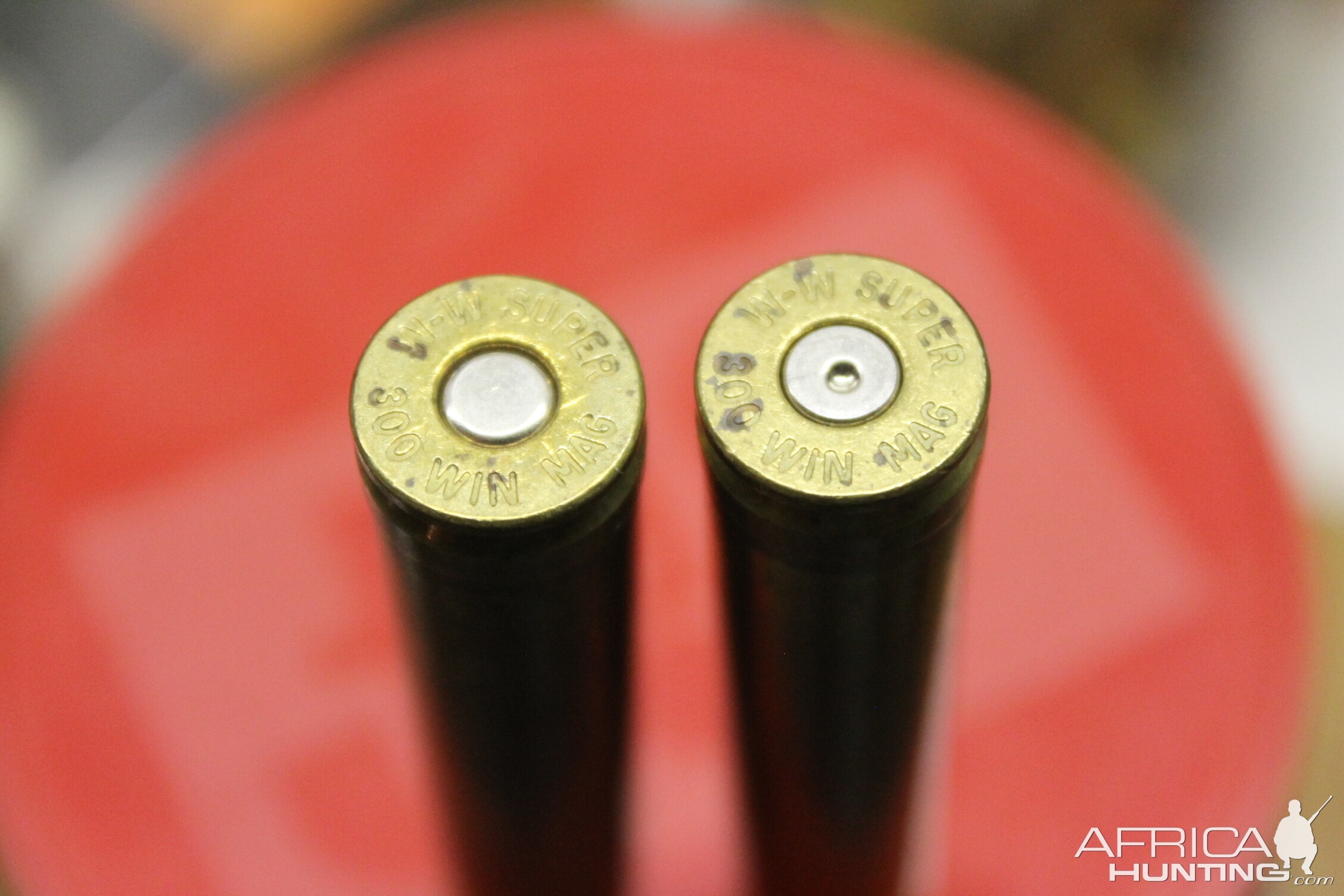Adam S
AH veteran
Hi all. I have a question that I hope isn't ridiculous. I've handloaded for several years, but have done low pressure rounds like .38 Special and downloaded rifle cartridges to use in older military rifles for target use only. I'm working up a load for my .300 Winchester Magnum and wanted to get opinions from those more experienced than me if my primers look like they're flattening too much.
Here's what I think is pertinent info, though I may be overlooking some things:
1. Rifle is a Sako 85. Primer is CCI Magnum, powder is IMR 4350, bullet is Barnes TSX 180 gr.
2. This is the max load listed in the Barnes manual (69.0 gr)
3. My chrono results are a very consistant 2912 (Barnes manual lists 2978. I know there are lots of factors in max velocity, I'm just listing it for reference.
4. There is no sticking of the bolt or difficulty extracting at all.
5. Recoil seems consistant with other loads.
6. It's a little hard to tell in picture, but there is no cratering of the primer that I can tell.
7. I cannot see any ejector marks on the brass.
8. I MIGHT, just maybe be able to convince myself I see a little of an impression on the primer of tiny machining marks that MAY match the bolt face. It could easily be my imagination.
So my question is, does this amount of primer flattening look concerning? I'm not out for the hottest load or last fps, but this load is averaging 3/4 MOA so I don't want to abandon it if all is ok.
Thanks!

Here's what I think is pertinent info, though I may be overlooking some things:
1. Rifle is a Sako 85. Primer is CCI Magnum, powder is IMR 4350, bullet is Barnes TSX 180 gr.
2. This is the max load listed in the Barnes manual (69.0 gr)
3. My chrono results are a very consistant 2912 (Barnes manual lists 2978. I know there are lots of factors in max velocity, I'm just listing it for reference.
4. There is no sticking of the bolt or difficulty extracting at all.
5. Recoil seems consistant with other loads.
6. It's a little hard to tell in picture, but there is no cratering of the primer that I can tell.
7. I cannot see any ejector marks on the brass.
8. I MIGHT, just maybe be able to convince myself I see a little of an impression on the primer of tiny machining marks that MAY match the bolt face. It could easily be my imagination.
So my question is, does this amount of primer flattening look concerning? I'm not out for the hottest load or last fps, but this load is averaging 3/4 MOA so I don't want to abandon it if all is ok.
Thanks!

Last edited by a moderator:




